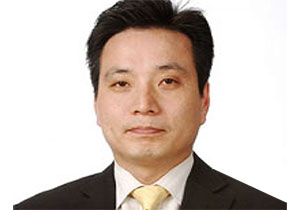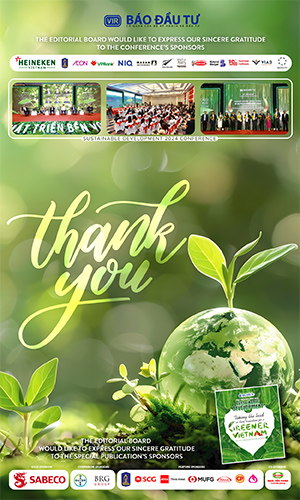Overview: 25 years of Korean investment
 |
| Park Chulho, director general of Kotra Hanoi |
How has South Korean investment developed in Vietnam over the past years?
Vietnam’s economic growth and industrialisation started in 1986 when the doi moi policy was adopted. After that, the US’ removal of sanctions on Vietnam brought large-scale FDI investment to the country, providing momentum for rapid economic growth and industrialisation. FDI in the 1990s came mostly from Asian countries, such as Japan and Korea, among others. The core focus at the time was the labour-intensive manufacturing and processing sector. After the turn of the millennium, investment sectors changed towards the more capital-intensive industries, such as machinery and electronics manufacturing, improving the investment structure and gradually concentrating on higher value-added business.
The primary reason for FDI investors to enter Vietnam is the abundance of relative low-cost but skilled labour and political stability. Additionally, the country’s 100 million population provides Korean companies with an extremely large and receptive consumer market. Coupled with the effects of the Vietnam-Korea FTA that has come into force at the end of 2015, as well as the host of other bilateral and multilateral agreements that Vietnam signed or are under negotiation, such as the Vietnam-EU FTA and RCEP, and it is clear that Vietnam is about to become a business hub with easier access to neighbouring markets than any other Southeast Asian country.
In addition to its geographical advantage, the strong determination of the Vietnamese government to attract FDI capital is also an important factor.
Korean investments into Vietnam can be divided into three main stages that are easily separable both chronologically and by forms of investment.
The first was the stage of approach, when big Korean construction enterprises like Posco and Daewoo appeared in Vietnam as the pioneers of Korean investment. In the second stage, the take off period, the US-Vietnam Bilateral Trade Agreement and Vietnam’s participation in the WTO lured Korean investors to the textile, fabric, and sewing industries.
The most recent stage is the expansion stage, which was hallmarked by the investments of Samsung Electronics Group. Since this foray, there has been an extraordinary surge in electric and electronic investments and Korean firms have been in a frenzy to diversify investments in Vietnam.
Currently, Korea is the largest foreign investor in Vietnam, followed by Japan, Singapore, and Taiwan.
Since the establishment of official diplomatic relations in 1992, the Korean-Vietnamese partnership has been developing dynamically in all areas. It has been developing not only in the private sphere, but has been more than fruitful in the fields of politics, economics, society and culture, science, and security, education, and labour.
As is well known, the two countries’ relationship has been upgraded from the “21st century comprehensive cooperation partnership” to a “strategic cooperation partnership” at the Korea-Vietnam Summit in 2009.
As of 2016, Korea was the third largest trading partner (the fourth largest exporting and the second largest importing partner) to Vietnam. At the same time, Vietnam was the fourth largest trading partner (the fourth largest exporting and the eighth largest importing partner) to Korea. Obviously, we are one of the most important trading partners of one other.
More than 5,000 Korean companies have invested in Vietnam and personal exchanges between the two countries have been actively pursued. With the increasing exchanges and socio-economic cooperation between the two countries in the years ahead, Korean companies are growing more interested in Vietnam than ever before. Therefore, I can forecast with great certainty that the trade between the two countries will continue to grow along with the entry of Korean companies to Vietnam. I will also make every effort to contribute to the development of the Vietnamese society and culture as well as its economy.
What impacts did the Vietnam-South Korea Free Trade Agreement (VKFTA) have on South Korean investment activities in Vietnam? How have these firms been operating since the agreement came into effect?
VKFTA, compared to the Korea-ASEAN FTA or the Bilateral Investment Treaty between the two countries, provides a higher level of investment liberalisation and investor protection and includes consultation on institutional arrangements for resolving the difficulties of Korean companies investing in Vietnam. These advantages make Vietnam a more favourable investment environment for Korean companies.
There is no doubt that the enhanced market access and the favourable trade and investment environment brought about by VKFTA have contributed to Korean investors’ confidence in Vietnam. This is also confirmed not only by the increased number of projects or amount invested, but also by the expanded variety of sectors. There is a marked tendency of Korean companies departing from the traditional manufacturing and processing industries and expanding to real estate, construction, and distribution
It is clear that more and more Korean companies will come to Vietnam, which will, in turn, boost investments both in terms of quantity and quality. In Korea, there are many companies with abundant capital, high technical skills, and strong management abilities looking to explore new markets—and they are paying attention to ASEAN markets, especially Vietnam.
Vietnam has great growth potential in various industries, such as materials, infrastructure, energy, finance, medicine, and IT, almost perfectly matching the profile of Korean companies. If it is verified that these promising industries will yield high returns and, above all, if the Vietnamese government continues to improve its business environment, I believe Korean investments in Vietnam will be more diverse and advanced in the future.
What are the focuses of South Korean firms in Vietnam?
As can be seen in the 2016 Korean investment trend in Vietnam, manufacturing and processing still make up the largest portion with 70 per cent of the accumulated Korean investments (from 1988) and 82 per cent of 2016 investments.
Undeniably, besides the manufacturing and processing sector, various fields in the service industry, such as wholesale and retail, culture, and science and technology, are expanding at a significant pace. However, the service and distribution sectors have not managed to overtake the manufacturing and processing sector in terms of growth speed yet.
Electric and electronic manufacturing account for the largest portion of the manufacturing and processing sector (65 per cent), followed by textile and fabric manufacturing (20 per cent).
Currently, Korean enterprises are most keen on the material and parts industry, which directly support not only existing investment fields, but also the new fields of interest, such as the high-tech industries of automobile, medical device, and airplane manufacturing.
Korean investors are still keen on the services and distribution sectors, even though they seem to be shifting from offline wholesale and retail to web-based distribution.
Regarding education, investment was intense, as some new investment models in developing e-learning projects haves been created by cooperation with local start-up companies.
What investment trends do you foresee in the future?
As Korean investors have recognised Vietnam as an important manufacturing hub, most investment projects have focused on this sector. In recent years, despite the fact that the overall value of Korean investments in the Vietnamese manufacturing sector has seen a slight decrease, it still accounts for the largest portion at above 80 per cent of the total investment coming from Korea.
The changes of the Chinese investment environment has led to an increasing number of Korean investors relocating to Vietnam. This trend has been predicted to carry on for a while.
I am fairly certain that Korean firms will not focus solely on manufacturing, but will eventually expand to distribution, wholesale and retail, logistics, technology, science, and infrastructure. As Vietnam’s economy and industry are developing, investment in services related to these sectors will inevitably increase. Currently, existing export-oriented manufacturing companies are also interested in local distribution due to the growth of the domestic market.
In addition, the newest global trend in recent years is ‘Product Servitisation’. Now it is impossible to make great added value by simply manufacturing a product, so it is expected that various service business fields related to manufacturing will be prioritised for investment.
| RELATED CONTENTS: | |
| A glimpse into the future of Korean-Vietnamese ties | |
What the stars mean:
★ Poor ★ ★ Promising ★★★ Good ★★★★ Very good ★★★★★ Exceptional
Latest News
More News
- Strong tailwinds lift Vietnam’s aviation sector (April 14, 2025 | 17:04)
- Meiko Electronics prepares to expand PCB manufacturing plant (April 14, 2025 | 12:25)
- New regulations could help legitimise digital assets (April 12, 2025 | 08:13)
- Lego opens its 'most environmentally sustainable' plant in Binh Duong (April 10, 2025 | 09:30)
- Financial centres will ensure new standards (April 09, 2025 | 08:55)
- Spanish PM’s trip paves way for stronger cooperation with Vietnam (April 08, 2025 | 16:01)
- Ho Chi Minh City’s financial ambitions must possess the authority of the tiger (April 08, 2025 | 15:50)
- AmCham urges US to consider tariffs grace period (April 04, 2025 | 16:34)
- The Ministry of Finance commits to support Intel (April 04, 2025 | 16:11)
- Robust market could pull in fund appetites (April 04, 2025 | 15:52)
















 Mobile Version
Mobile Version